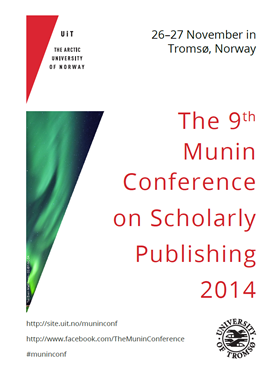When decade-old functionality would be progress – the desolate state of our scholarly infrastructure
DOI:
https://doi.org/10.7557/5.3226Keywords:
munin conference 2014Abstract
>> See video of presentation ( 65 min.)
Even (or maybe especially?) if you are not a professor at a university, you are familiar with web-technology of the last decade. You have seen "customers who have bought this item also bought this item" - it is ubiquitous. Ten years ago, Facebook was founded and four years later they bought the 'like' technology from Friendfeed, now also ubiquitous on other platforms. None of these technologies are available for scholarly work. Even a technology from the web's earliest days, access counters, are only now, more then 20 years later, starting to become available for our literature. Probably most embarrassingly, a technology first showcased in 1968 - hyperlinks - still remains to be efficiently and pervasively implemented in scholarly works of today. With a literature that would only minimally lose functionality if it were carved in stone, photographed and the pictures then posted online, effectively implementing technology that is ten, twenty or thirty years old would constitute a massive improvement in scholars' daily working lives. But we should not only look back in anger, we should also look forward with fervor and vision: right in front of us, within reach, lies a utopia that is easily realizable with the ten billion US$ we annually waste on publishers. This is a call to reappropriate the public good that is scholarship and to use subscription funds to develop our infrastructure.









